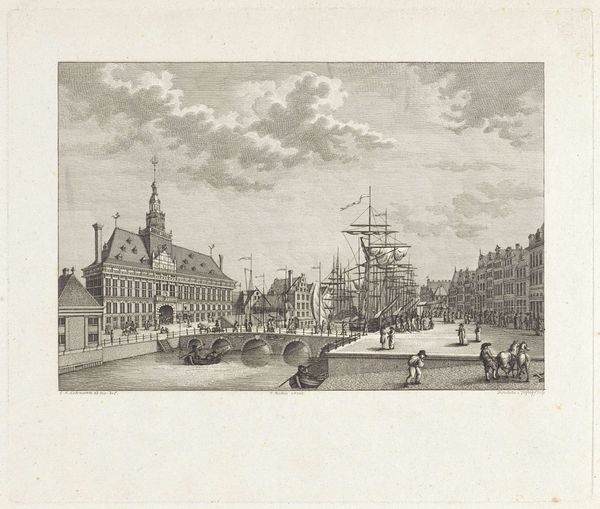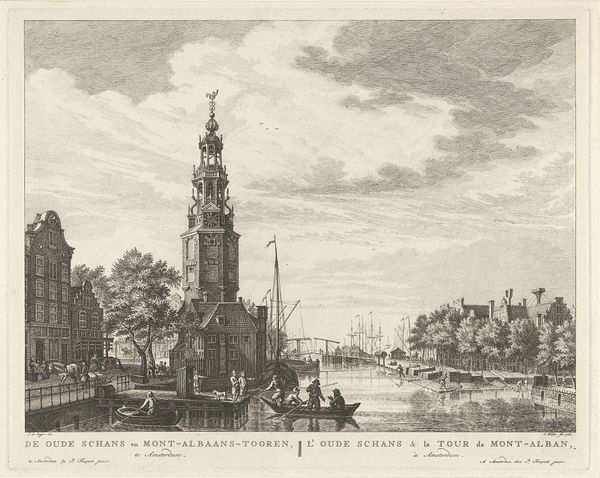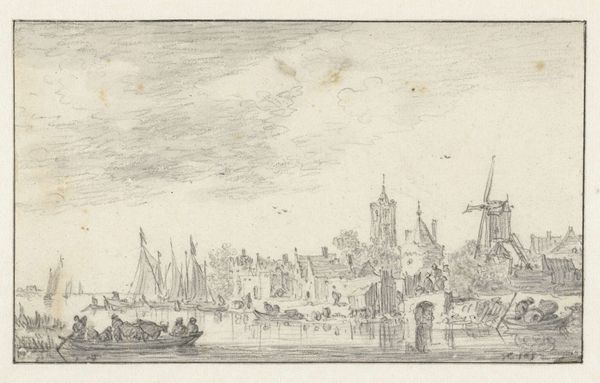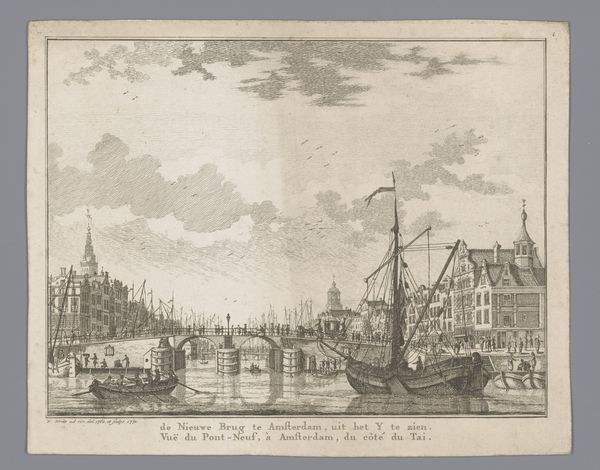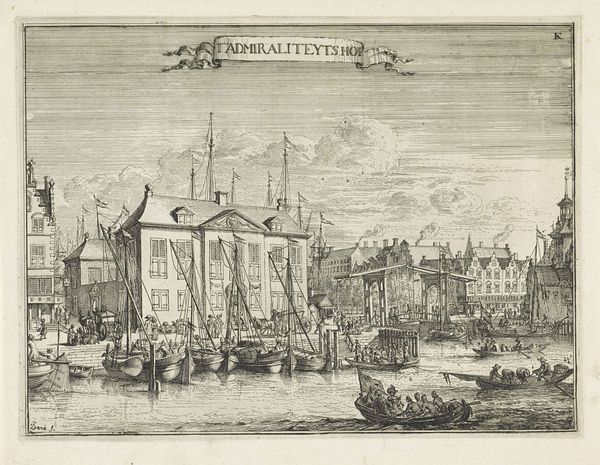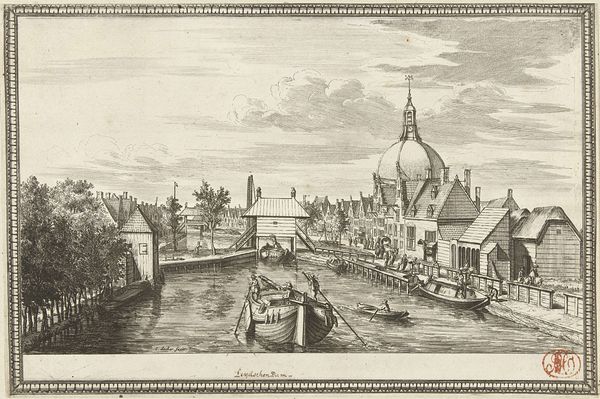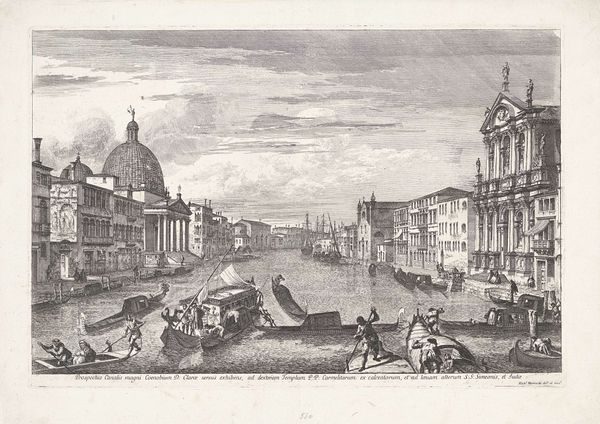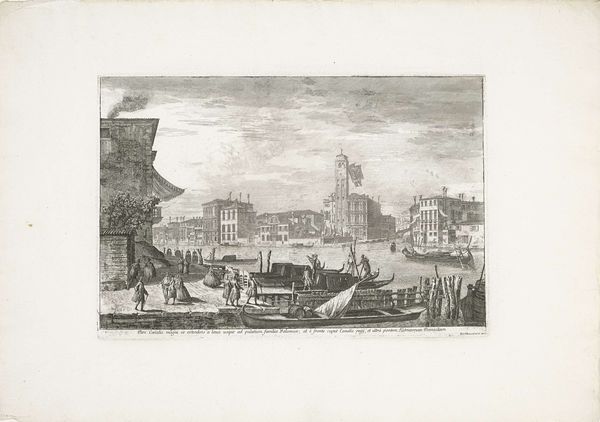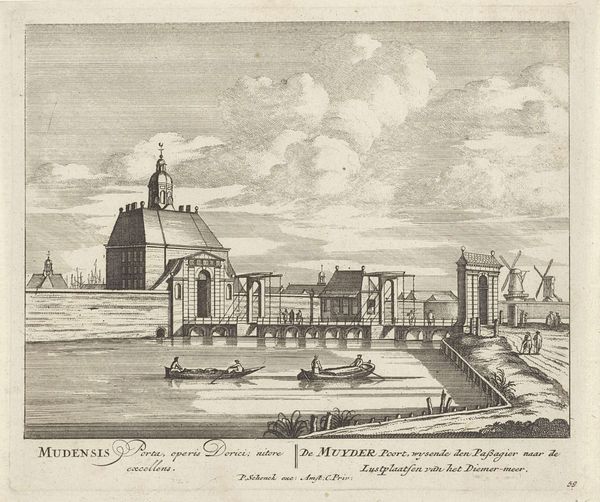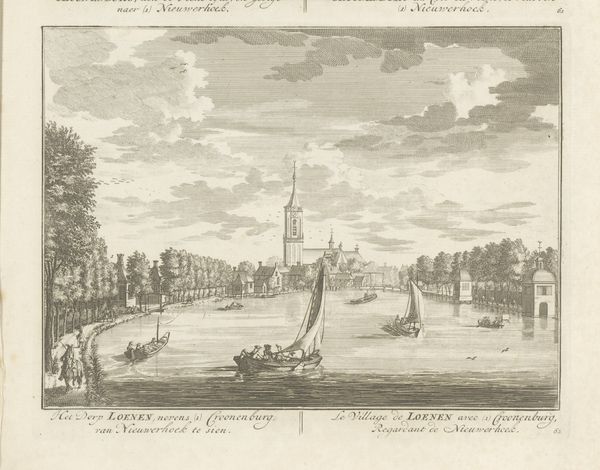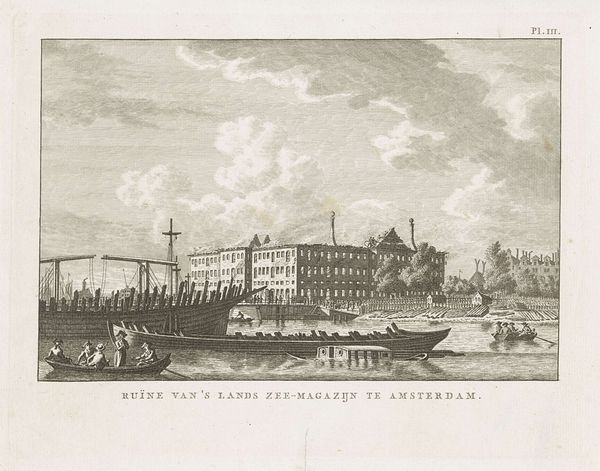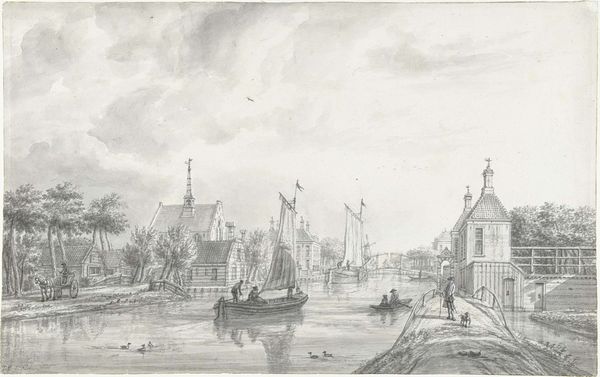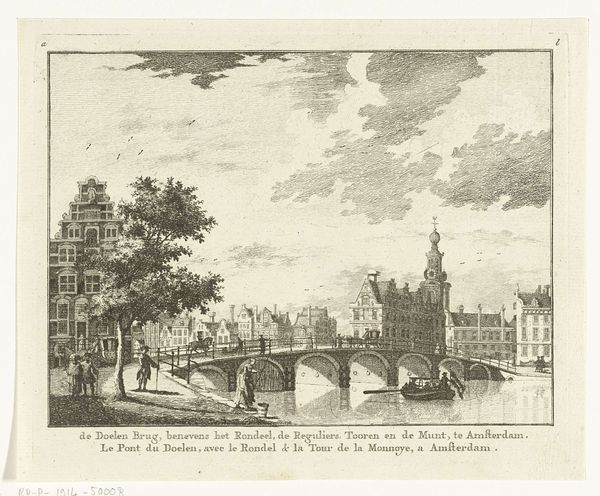
De kom in de trekvaart tussen Den Haag en Leiden in Leidschendam 1756 - 1782
0:00
0:00
print, etching, pen, engraving
#
aged paper
#
light pencil work
#
dutch-golden-age
# print
#
etching
#
pencil sketch
#
old engraving style
#
sketch book
#
landscape
#
personal sketchbook
#
sketchwork
#
pen-ink sketch
#
pen work
#
sketchbook drawing
#
pen
#
cityscape
#
engraving
Dimensions: height 180 mm, width 258 mm
Copyright: Rijks Museum: Open Domain
Editor: Here we have "De kom in de trekvaart tussen Den Haag en Leiden in Leidschendam" an etching by Paulus Constantijn la Fargue, dating back to sometime between 1756 and 1782. There's something very precise, almost documentary, about it, and I find that intriguing. What stands out to you in this work? Curator: It's fascinating how la Fargue uses this cityscape to present a very particular view of Dutch society at that time. Notice the clear divisions between the classes depicted on the canal. How do you think access to the canal, or lack thereof, might speak to issues of social mobility and power in 18th-century Netherlands? Editor: I hadn't considered it in that light! I was just focusing on the details of daily life, like the figures gathered by the canal. Curator: Exactly, those carefully rendered details *are* important. Consider who has access to leisurely boat rides versus who's relegated to the street. And what about the architecture itself? Does it suggest a stratified society? The imposing buildings versus more modest structures—what narrative do they tell? Editor: Now that you mention it, there’s definitely a sense of hierarchy, almost like a visual representation of the haves and have-nots right there by the water's edge. Curator: Precisely! By examining such elements within their historical context, we can understand how artists like la Fargue, consciously or unconsciously, reflected and perhaps even critiqued the social and political landscape of their time. These works become invaluable historical documents. Editor: I see, it really shifts my perspective when I start to consider the broader societal implications embedded within the artwork. Curator: Art doesn't exist in a vacuum. It's always speaking to and shaped by its surrounding context, its social conditions. Editor: I’ll definitely look at these older artworks in a new way now! Thanks for sharing your insights!
Comments
No comments
Be the first to comment and join the conversation on the ultimate creative platform.
